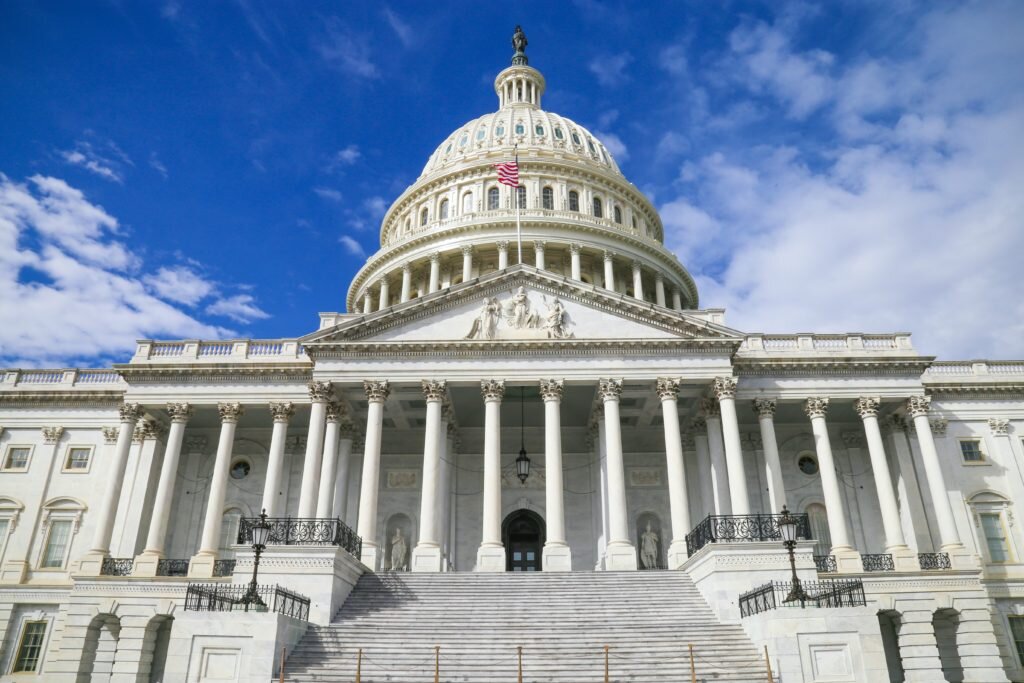Panelists at a House Subcommittee hearing urge federal action on water

Kipper Berven and Olya Egorov, EPIC Water Policy Interns
This past week, the entire country witnessed millions of Texans lose access to power and running water as freezing temperatures crippled the state’s existing utility infrastructure. While such dramatic cold weather in Texas is uncommon, these events illuminate the severity of America’s problematic aging infrastructure, specifically as it pertains to water. In a 2017 report card issued by the American Society of Civil Engineers, the country’s overall grade for water infrastructure scored a measly D+. This, along with the disaster in Texas, depicts a broader picture that American water infrastructure is in desperate need of increased funding, as well as policies that improve the affordability and accessibility of safe drinking water.
On Tuesday, EPIC water policy interns, Kipper Berven and Olya Egorov, attended a hearing held by the House Committee on Transportation and Infrastructure’s Subcommittee on Water Resources and the Environment titled “Building Back Better: The Urgent Need for Investment in America’s Wastewater Infrastructure.” The hearing provided valuable insights from a number of the nation’s foremost experts on water infrastructure into the most pressing issues facing America’s infrastructure and where the most effective solutions may lie.
The witnesses included Mayor Dave Berger of Lima, Ohio, Bill Sterud of the Puyallup Tribal Council, Oluwole McFoy on the behalf of the National Association of Clean Water Agencies, Tom Teske of EJ Americas, Brenda Coley of Milwaukee Water Commons, and lastly, David Mallino of the Laborers International Union of North America.
Despite the diversity of backgrounds, and expertise among the hearing’s panelists, a unanimous consensus quickly emerged that America’s current federal funding for water infrastructure is grossly insufficient to meet the country’s current and future needs. Without enough federal investment in these crucial projects, greater shares of upfront construction costs and operation and maintenance expenditures fall on local utilities, and ultimately individual rate payers. This effect is felt strongest in rural communities, where smaller utilities lack the capital to undergo significant infrastructure improvements without raising consumer rates to a degree that may jeopardize the finances of many individuals and families.
America’s current federal funding for water infrastructure is grossly insufficient to meet the country’s current and future needs.
Local governments are doing their best to allocate funding for these projects, spending over $130 billion dollars in 2018 on water infrastructure improvements. Unfortunately this local funding alone is not sufficient to meet the needs of the nation’s deteriorating infrastructure, and dramatic increases in federal expenditures will be necessary to ensure citizens’ access to safe and affordable water.
Increased federal funding is needed both to repair aging water infrastructure on the verge of dysfunction, as well as increasing capacity for the 56 million new water infrastructure users expected to increase demand over the next decade. The EPA estimates that local governments and utilities across the country would need over $270 billion of funding in order for stormwater infrastructure improvements and repairs alone. When accounting for drinking water needs as well, even conservative figures balloon to over $600 billion.
The detrimental impacts of the nation’s rapidly deteriorating water infrastructure is not evenly distributed throughout American society. Brenda Coley from Milwaukee Water Commons mentioned that the oldest and least functional water infrastructure tended to exist in downtown areas of major cities, predominantly inhabited by black and latinx communities.
In Native American communities, there is a backlog in funding for sanitation infrastructure that exceeds $2.5 billion. Because of this, over 30% of residents in these communities lack access to basic sanitation infrastructure. Besides being a major public health problem, this inadequate sanitation infrastructure leads to major environmental issues in surrounding areas. Bill Sterud, representing the Puyallup Tribal Council, highlighted that raw sewage flows into the Puget Sound almost every day due to the poor infrastructure, increasing the water’s nutrient loads and leading to eutrophication and hypoxic conditions that kill fish and other wildlife.
In the simplest terms, the experts at the hearing testified that solutions to America’s water infrastructure problems necessitated a dramatic increase in federal funding for these projects. This funding could be provided through existing legislative frameworks, such as State Revolving Funds or the Water Infrastructure Finance and Innovation Act, or through new laws already proposed in Congress. One such law that the committee mentioned is the Water Quality Protection and Job Creation Act, which would increase access to government grants for a variety of water pollution amelioration efforts, including pollution control programs, watershed projects, and sewer overflow mitigation for CSOs and SSOs.
In whichever mechanism the federal funding is conveyed, it will bring massive public benefits beyond just improved water infrastructure -every billion dollars invested in water infrastructure brings roughly 28,000 jobs. With the right amount of funding, the federal government could stimulate hundreds of thousands of high-paying, skilled positions that would jumpstart the country’s economic recovery from the pandemic while contemporaneously providing opportunities for historically disadvantaged BIPOC communities.
One quotation in particular holistically summarized the general takeaways from the day’s testimonies. Oluwole McFoy, General Manager of the Buffalo Sewer Authority and Chair of the City of Buffalo Water Authority - who was profiled by EPIC as a transformational leader - stated: “The key to ending this cycle and restoring a sense of equity to our water utility system is having a re-engaged federal partner that is willing to help fund the infrastructure work that will allow cities to modernize their systems, employ innovative technologies that reduce maintenance costs, build systems that will be more resilient against the effects of global climate change, and then pass those savings on to ratepayers in a restorative way”

